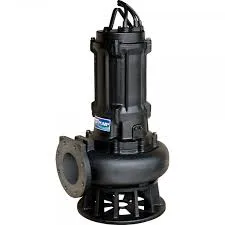English
- Afrikaans
- Albanian
- Amharic
- Arabic
- Armenian
- Azerbaijani
- Basque
- Belarusian
- Bengali
- Bosnian
- Bulgarian
- Catalan
- Cebuano
- Corsican
- Croatian
- Czech
- Danish
- Dutch
- English
- Esperanto
- Estonian
- Finnish
- French
- Frisian
- Galician
- Georgian
- German
- Greek
- Gujarati
- Haitian Creole
- hausa
- hawaiian
- Hebrew
- Hindi
- Miao
- Hungarian
- Icelandic
- igbo
- Indonesian
- irish
- Italian
- Japanese
- Javanese
- Kannada
- kazakh
- Khmer
- Rwandese
- Korean
- Kurdish
- Kyrgyz
- Lao
- Latin
- Latvian
- Lithuanian
- Luxembourgish
- Macedonian
- Malgashi
- Malay
- Malayalam
- Maltese
- Maori
- Marathi
- Mongolian
- Myanmar
- Nepali
- Norwegian
- Norwegian
- Occitan
- Pashto
- Persian
- Polish
- Portuguese
- Punjabi
- Romanian
- Russian
- Samoan
- Scottish Gaelic
- Serbian
- Sesotho
- Shona
- Sindhi
- Sinhala
- Slovak
- Slovenian
- Somali
- Spanish
- Sundanese
- Swahili
- Swedish
- Tagalog
- Tajik
- Tamil
- Tatar
- Telugu
- Thai
- Turkish
- Turkmen
- Ukrainian
- Urdu
- Uighur
- Uzbek
- Vietnamese
- Welsh
- Bantu
- Yiddish
- Yoruba
- Zulu
Telephone: +86 13120555503
Email: frank@cypump.com
Nov . 22, 2024 15:39 Back to list
sewage sump pump
Understanding Sewage Sump Pumps Their Importance and Functionality
Sewage sump pumps are essential devices used in managing wastewater and sewage in residential, commercial, and industrial settings. These pumps play a crucial role in preventing flooding and maintaining sanitary conditions by efficiently removing waste water from areas where gravity drainage is not feasible. Understanding the importance, functionality, and maintenance of sewage sump pumps can help homeowners and facility managers make informed decisions when it comes to wastewater management.
A sewage sump pump is designed to transport sewage and wastewater from a lower level, such as a basement, to a higher level or to the main sewer line. This is especially important in areas prone to flooding where gravity alone cannot ensure the proper drainage of waste materials. The pumps are usually installed in a sump pit, which collects the wastewater from various sources, including sinks, bathrooms, and laundry rooms.
The operation of a sewage sump pump is relatively straightforward
. When wastewater fills the sump pit to a predetermined level, the pump activates automatically, driven by a float switch mechanism. Once activated, the pump pushes the sewage through discharge pipes, usually directed toward the municipal sewage system or a septic tank. This process not only helps to prevent unpleasant odors and bacteria proliferation but also protects the property from extensive water damage.sewage sump pump

There are different types of sewage sump pumps available in the market, including submersible pumps and pedestal pumps. Submersible pumps are designed to be submerged in the sewage water within the pit, making them highly efficient and less noisy during operation. On the other hand, pedestal pumps are positioned above the pit, with the motor located outside the sewage. While they tend to be less expensive, they may not handle solids as efficiently as submersible pumps.
When it comes to maintaining a sewage sump pump, regular checks and routine maintenance are crucial to ensure its longevity and efficiency. Homeowners should inspect the pump periodically, looking for any signs of wear and tear, such as corrosion or clogs. Cleaning the sump pit and ensuring that the float switch moves freely are also necessary steps to prevent pump malfunction. Additionally, testing the pump at least once a year can help identify any potential issues before they lead to significant problems.
One of the most common concerns associated with sewage sump pumps is electrical failure, particularly during storms. To combat this issue, it’s advisable to invest in a backup power source, such as a battery-powered sump pump, to ensure continued operation even during power outages. This redundancy is vital in maintaining proper sewage management, especially in areas prone to heavy rain or flooding.
In conclusion, sewage sump pumps are a critical component of effective wastewater management systems. By understanding how they work and the importance of regular maintenance, homeowners and property managers can avoid costly repairs and health hazards associated with flooding and sewage buildup. Investing in a reliable sewage sump pump and ensuring its proper functioning is key to protecting one’s property and ensuring a hygienic environment.
-
Horizontal Split Case Pump with GPT-4 Turbo | High Efficiency
NewsAug.01,2025
-
ISG Series Pipeline Pump - Chi Yuan Pumps | High Efficiency, Durable Design
NewsAug.01,2025
-
Advanced Flue Gas Desulfurization Pump with GPT-4 Turbo | Durable & Efficient
NewsJul.31,2025
-
ISG Series Vertical Pipeline Pump - Chi Yuan Pumps | Advanced Hydraulic Design&Durable Construction
NewsJul.31,2025
-
ISG Series Vertical Pipeline Pump - Chi Yuan Pumps | Energy Efficient & Low Noise
NewsJul.31,2025
-
pipeline pump - Chi Yuan Pumps Co., LTD.|High Efficiency&Low Noise
NewsJul.31,2025










